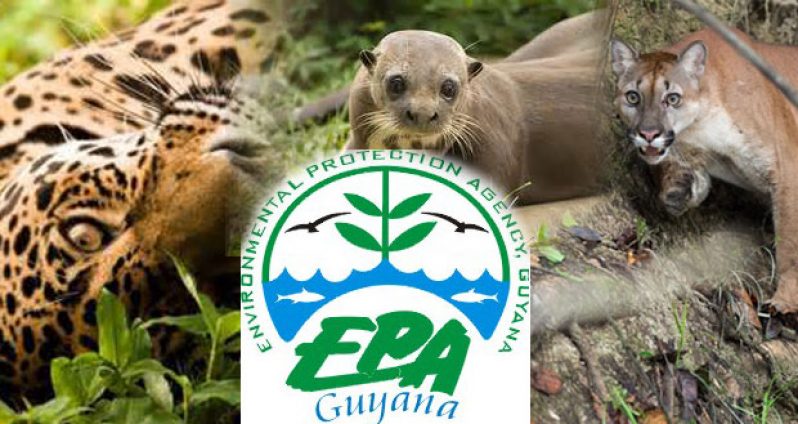Forests and Water
Every part of the environment is interconnected. Take for example forests; just a little thought will quickly make you realise that they are needed for the steady supply of good quality water, good air quality, climate stability, support healthy wildlife populations, etc. Because of the high value of forests to the quality of the environment and human life, the UN has designated March 21 as International Day of Forests to celebrate forests and to focus on actions to better manage and sustain them. On this Day, people around the world organise activities to raise awareness about a particular importance of forests to people and the environment. Covering one third of earth’s land surface, forests shelter, nurture and inspire over one billion people providing them with livelihoods, medicine, fuel and food.
Because of the high value of forests to the quality of the environment and human life, the UN has designated March 21 as International Day of Forests to celebrate forests and to focus on actions to better manage and sustain them. On this Day, people around the world organise activities to raise awareness about a particular importance of forests to people and the environment. Covering one third of earth’s land surface, forests shelter, nurture and inspire over one billion people providing them with livelihoods, medicine, fuel and food.
For 2016, the international theme, “Forests and Water” puts the spotlight on the connection between forests and water. Forests help to maintain the health of aquatic ecosystems and provide reliable supplies of clean freshwater. But not only do they filter and clean water, forests also help prevent soil erosion, reduce sedimentation in reservoirs and mitigate the risks of mudslides and floods, all problems that can threaten downstream water supplies. And while forests themselves consume water, they also improve infiltration rates, thereby helping recharge underground aquifers.
Here are some important facts about the forest-water connection.
• Forested watersheds and wetlands supply three quarters of the world’s accessible fresh water for domestic, agricultural, industrial and ecological needs.
• By maintaining and providing high-quality freshwater, forests play a pivotal role in the earth’s ecology and contribute significantly to the wealth and welfare of human societies.
• About one-third of the world’s largest cities obtain a significant proportion of their drinking water directly from forested protected areas e.g. Mumbai; Bogota; New York.
• Forests act as natural water filters
Forests minimise soil erosion on site, reduce sediment in water bodies, such as, wetlands, ponds, lakes, streams, rivers, and trap or filter water pollutants in the forest litter.
Because of their importance in providing and filtering water, forests need to be managed to ensure that they continue to provide these services. As such, people must choose to use forests wisely, to enable then to retain their ability to regenerate quickly enough to continue to their important water-related functions. Sustainable management of the forests also contributes to the reduction of natural disasters which can disrupt the source and supply of freshwater such as soil erosion and landslides. Forests also protect and rehabilitate areas that are prone to soil degradation.
 Clearing of forests accelerate the rate of water discharge, which increases the risk of flooding during rainy season and drought in dry season. Additionally, trees play an important role in climate regulation through evapotranspiration and the provision of shade which aids in cooling. By cutting down trees indiscriminately we contribute to climate change and availability of water resources since large-scale deforestation has an impact on precipitation patterns.
Clearing of forests accelerate the rate of water discharge, which increases the risk of flooding during rainy season and drought in dry season. Additionally, trees play an important role in climate regulation through evapotranspiration and the provision of shade which aids in cooling. By cutting down trees indiscriminately we contribute to climate change and availability of water resources since large-scale deforestation has an impact on precipitation patterns.
According to the FAO, by 2030, the world is projected to face a 40 percent global water deficit under the business-as-usual scenario. However, every US$1 invested in watershed protection can save anywhere from US$7.5 to almost US$200 in costs of a new water treatment and filtration facility. In developing countries, a US$15 to US$30 billion investment in improved water resources management could have direct annual income returns in the range of US$60 billion.
The EPA, collaborates with such organisations as the Guyana Forestry Commission (GFC), Guyana Geology and Mines Commission (GGMC) and Ministry of Agriculture towards sound management of our forests. As International Day of Forests 2016, approaches let us all remember the importance of forests in maintaining our water supply and do all we can to maintain the integrity of our forests.
Sources:
http://www.un.org/en/events/forestsday/background.shtml
http://www.fao.org/forestry/international-day-of-forests/en/
Share your ideas and questions by sending letters to: “Our Earth, Our Environment”, C/O EIT Division, Environmental Protection Agency, Ganges Street, Sophia, GEORGETOWN, or email us at: eit.epaguyana@gmail.com or you can contact the Agency on 225-5467-9.
Also check out our Facebook page, Environmental Protection Agency-Guyana.



.jpg)









